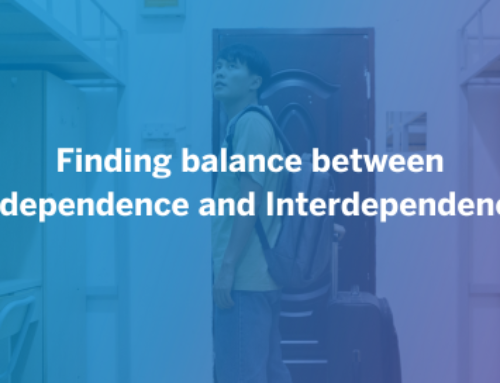
The big question looms: why do children find it so difficult to ask for help when they’re struggling? Reflecting on my own journey, the answer became clear—I didn’t even realize I needed help. As parents, the crucial first step is to convey to our kids that it’s perfectly okay to reach out when they’re feeling different or down. They need to know that when their emotions shift, seeking support is not only safe but encouraged. Whether it’s grappling with social status, body image, learning hurdles, or other challenges, understanding that there are avenues for assistance is important. Yet, several barriers often stand in a child’s way, from fear and a lack of understanding to the social stigma surrounding mental health.
Despite progress, the stigma surrounding mental health is still here, perpetuating harmful beliefs about weakness or inadequacy. This stigma infiltrates children’s perceptions and interactions, compelling them to hide their emotions or dismiss their struggles altogether. Parents can help in dismantling this stigma within their children’s minds. Through gentle and loving conversations, you can reassure them that experiencing emotions is natural and that help is not a sign of weakness but of strength. Sharing your own experiences of seeking help can be very beneficial, showing that they’re not alone and empowering them to embrace support when needed. According to Stanford Medicine (2014) “People who feel more connected to others have lower levels of anxiety and depression. Moreover, studies show they also have higher self-esteem, greater empathy for others, are more trusting and cooperative, and, as a consequence, others are more open to trusting and cooperating with them. In other words, social connectedness generates a positive feedback loop of social, emotional, and physical well-being.”
Cultural and familial influences have a significant sway over a child’s perception of mental health struggles. According to the National Library of Medicine (2023) “Unhealthy family dynamics can cause children to experience trauma and stress as they grow up. This type of exposure, famously known as adverse childhood experiences (ACEs), is linked to an increased risk of developing physical and mental health problems.” If parents or other family members talk down on those experiencing mental health challenges, it sends a clear message to the child that such issues are not to be openly discussed or that those struggles are not okay. However, demonstrating compassion and support towards individuals facing difficulties communicates a message of acceptance and understanding. The familial atmosphere sets the tone for how children perceive mental health, shaping their willingness to seek help when needed. Reflecting on personal experiences, I remember instances where my dad, though deeply caring, struggled to express his emotions openly. Witnessing his hesitancy to share his feelings might have subconsciously led me to believe I don’t need to say how I feel. Showing children that it’s not only acceptable but also beneficial to communicate openly about emotions fosters an environment of trust and vulnerability, paving the way for healthier emotional expression and support-seeking behaviors.
Social dynamics play a significant influence on children’s perceptions of mental health, as their peers’ attitudes shape their own views. Reflecting on my own experiences, when I was in sixth grade, there was a classmate who frequently missed school, and many students passed judgment without understanding the underlying mental health struggles she faced. In environments where judgment is prevalent, children may feel hesitant to disclose their own struggles for fear of similar scrutiny. The fear of losing friends can have an impact on them, as children worry about being left out if they open up about their challenges. According to ECRP (2008), “the children’s powerful influence can also become very domineering, limiting opportunities for other children’s ideas to be heard and fully integrated into their play, and making it difficult for other children to take initiative.” Teaching children about resilience can be helpful in navigating these social pressures, emphasizing that temporary setbacks don’t define them and that they have the strength to overcome adversity without fear of judgment by others. By instilling a sense of hope and resilience, parents can empower their children to go through difficult times and emerge stronger from the experience and not worry about the fear aspect when it come to the social dynamics.
In conclusion, it’s important to recognize the barriers that may prevent children from expressing their emotions and seeking help, including social pressures, lack of awareness of their own need for help, and the stigma surrounding mental health struggles. To overcome these barriers, parents can proactively create a nurturing and supportive environment where children see positive examples of emotional expression and support. Ultimately, the foundation of this support lies in ensuring that children feel unconditionally loved and safe to share their feelings, fostering a sense of comfort and acceptance within themselves. By prioritizing these aspects, parents can help break down barriers and cultivate an environment where children feel empowered to seek assistance when needed and embrace their emotional well-being.
By: Eva N.
References:
Lee, V. E. (2008). Let’s Get Physical: The Learning Environment as a Vehicle for Children’s Physical Development. Early Childhood Research & Practice, 10(1). https://ecrp.illinois.edu/v10n1/lee.htm
National Center for Biotechnology Information. (2023). Health Literacy. In National Library of Medicine (Eds.), StatPearls [Internet]. National Center for Biotechnology Information. Retrieved from https://www.ncbi.nlm.nih.gov/books/NBK560487/
Seppala, E. (2014). Connectedness & Health: The Science of Social Connection [Infographic]. Stanford University Center for Compassion and Altruism Research and Education. Retrieved from https://ccare.stanford.edu/uncategorized/connectedness-health-the-science-of-social-connection-infographic/








Leave A Comment